Menus
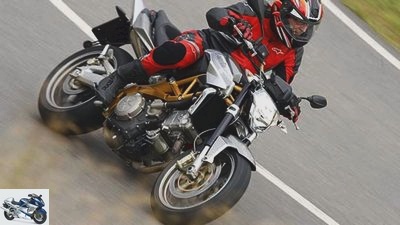
Gargolov
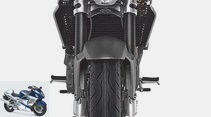
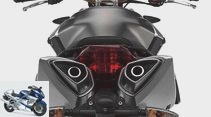
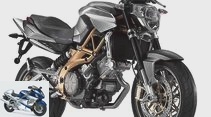
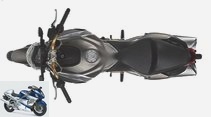
13 photos
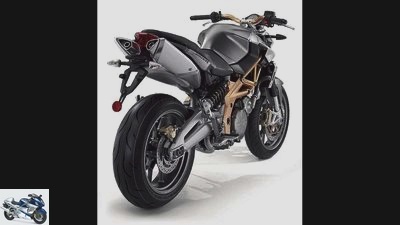
Aprilia
1/13
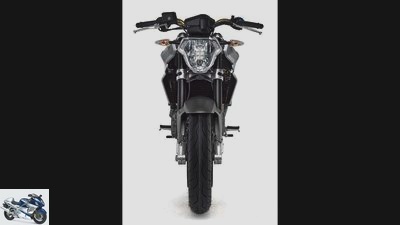
Aprilia
2/13
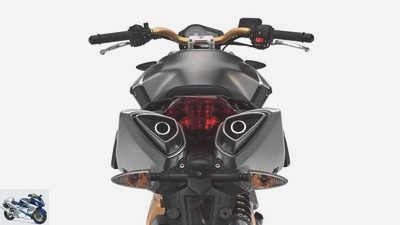
Aprilia
3/13
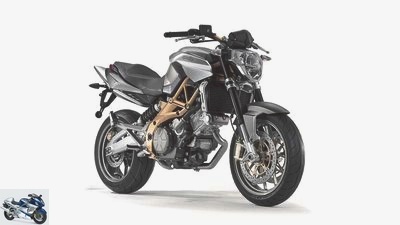
Aprilia
4/13
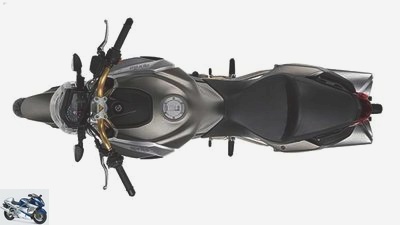
Aprilia
5/13
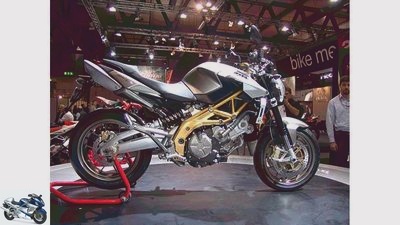
Say
6/13
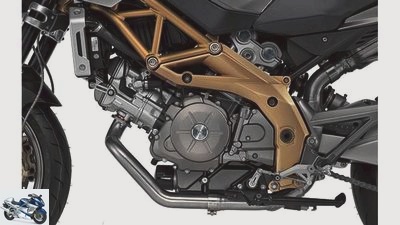
Aprilia
7/13
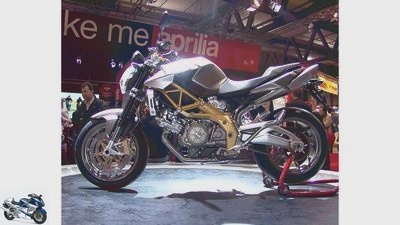
Say
8/13
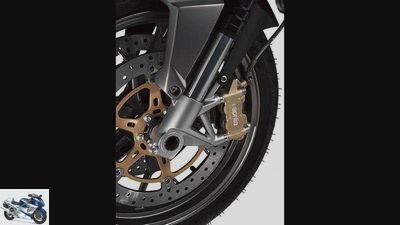
Aprilia
9/13
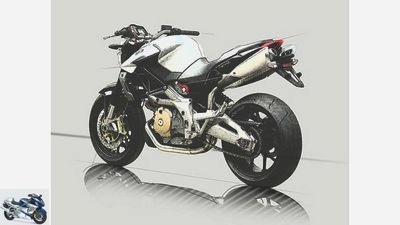
Aprilia
10/13
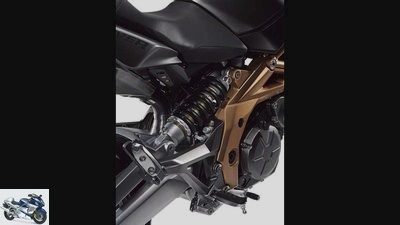
Aprilia
11/13
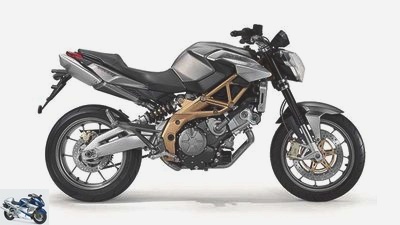
Aprilia
12/13
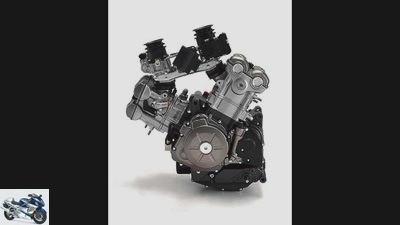
Aprilia
13/13
Aprilia SL 750 Shiver review
Claudia Shiver
We don’t know if the new Shiver actually has that first name. In any case, one thing is certain: it looks damn good. The test clarifies what the inner values of the 750 series are.
The two of them look at her with delight, almost enraptured. From head to toe, from front to back. You examine its striking face, its silver sheen, let your gaze wander sideways over its angular features and pleasing proportions, marvel at the golden tubular space frame with the screwed cast aluminum elements and the massive swing arm, which is supported against the frame by a spring strut arranged on the side. This creates space for the underseat exhaust system and gives the motorcycle a bulging rear. “It’s great!” Says the young couple on the roadside. And are by no means alone with this opinion. Wherever Aprilia’s new SL 750 Shiver stands or drives, it becomes the focal point if you look around for it. Most of them find a motorcycle that is excitingly beautiful. Fortunately, it is available at an affordable price. The naked bike costs 7,999 euros and has a lot to offer technically.
The ultra-short-stroke, water-cooled two-cylinder, designed by Aprilia and built by the parent company Piaggio in Pontedera, the Italians gave a valve train with two camshafts driven by chains and gears, as in their flagship, the RSV 1000. The 90-degree V2 should produce 95 hp, to be able to compete with comparable naked bikes like the new Triumph Street Triple or the Honda Hornet 600. So far only known from super athletes and the KTM 690 Supermoto, the Shiver controls the gas supply with electronically controlled throttle valves. The system called “Ride by wire” is intended to ensure a smooth throttle response as it helps to save fuel.
Initially, however, there is no trace of the former. The two-cylinder runs uncleanly, takes on gas with a delay and finally breaks down with an electronic defect, so that a new Shiver is hastily ordered in Italy. As with the previous one, this is also a pre-production copy. Their V-Twin purrs at least obediently, but disappoints on the dynamometer. 86 instead of the promised 95 hp. While their competitors easily come up with 100 hp. After all, the performance is convincing. The curve climbs nicely and smoothly, slows down gently at 9400 rpm, only to be gently sealed off shortly afterwards. Perfect on paper.
And this time in reality too. With a dull thud, the Shiver announces itself at the push of a button, reacting promptly with a hissing sound to every movement of the throttle grip. Holla! In gear ?? and off. But first of all, gently. No jerking, no chopping the chain, no annoying load change reactions, nothing. The V-engine grumbles softly in city traffic. Even under load, the four-valve engine runs smoothly at the lowest engine speeds, almost cultivated. The gears slide smoothly and precisely, the hydraulically operated clutch does its work in a well-dosed and smooth-running manner. At around 9500 rpm it is said to use the rev limiter, but the short-stroke doesn’t have to turn that high in order to impressively present itself. From 5000 rpm he tenses his muscles in order to really pull off the leather shortly afterwards. Only above 8000 rpm does the performance slowly decrease again. Some might want more thrust at the end of the speed ladder, but the power with which the Shiver comes up in the middle speed range cannot be matched by a BMW F 800 S, for example.
Nice and fast
It takes just five seconds to sprint from 100-140 km / h in top gear, and it takes just 16.3 seconds to accelerate from standstill to 200 km / h. In short: she is a runner and sprinter rolled into one. You like to go fast with it, but you can also enjoy driving with restraint.
She then thanks her with a consumption of 4.7 liters of Super per hundred kilometers of country roads. Country roads are the Shiver’s domain. Although its chassis can easily handle the top speed of 210 km / h, the sporty, tightly tuned naked bike is more inviting for cornering. The 217 kilogram heavy Shiver appears compact and light when fully fueled. You have a relaxed grip on the wide, tapered handlebar. It turned out to be downright slim. With a tight knee and a moderate knee angle, the pilot takes a slightly athletic stooped position. Only the angular seat cushion is a little tight and maltreats the butt after a short day’s hike. The passenger is better off. Although the sight suggests otherwise, it sits comfortably on the bun for a long time. The passenger can support himself well on the pegs, only the hands get quite warm on the handles directly above the rear silencers.
The Shiver circles through curves with playful handiness, following steering impulses with inspiring precision. The motorcycle drives neutrally up to the lean angle limit, which is also sufficient for a sporty driving style, reacting at best with a slight righting moment when braking. With the wide 180 mm rear tire on the six-inch rim, worse was expected. Even on poor road surfaces, the Shiver remains confident and provides very direct road contact. However, the non-adjustable upside-down fork could react a little more sensitively to uneven ground, and the ZF-Sachs shock absorber would be less hard. As a consolation, it satisfies all requirements even when fully loaded. Just like the two radially arranged four-piston calipers, which bite into the two 320 mm brake discs vehemently but can be precisely adjusted. The rear disc brake provides good support. In the first series, which will roll off the assembly line at the beginning of September, there is still no ABS for the Shiver. Aprilia wants to offer this optionally from January 2008. Then there should also be a main stand, sports footrests and carbon side panels and wheel covers for an additional charge. So that Claudia becomes even more attractive.
Data Aprilia SL 750 Shiver
Engine Water-cooled two-cylinder four-stroke 90-degree V-engine, two overhead, gear / chain-driven camshafts, four valves per cylinder, bucket tappets, wet sump lubrication, injection, ø 52 mm, regulated catalytic converter, alternator 450 W, battery 12 V / 10 Ah, hydraulically operated multi-disc oil bath clutch, six-speed gearbox, O-ring chain
Bore x stroke 92.0 x 56.4 mm
Cubic capacity 750 cm3
Compression ratio 11.0: 1
Rated output 70.0 kW (95 PS) at 9000 rpm
Max. Torque 79 Nm at 7250 rpm
Chassis, tubular steel frame, supporting motor, upside-down fork, ø 43 mm, two-arm swing arm made of aluminum, central spring strut, directly hinged, adjustable spring base and rebound damping, front disc brake, ø 320 mm, four-piston fixed calipers, rear disc brake, ø 245 mm, single-piston floating caliper.
Cast aluminum wheels 3.5 x 17; 6.0 x 17
Tires 120/70 ZR 17; 180/55 ZR 17
Tires in the TestDunlop Qualifier
mass and weight
Wheelbase 1440 mm, steering head angle 65.2 degrees, caster 109 mm, spring travel f / r 120/130 mm, seat height 810 mm, weight with a full tank * 217 kg, load * 183 kg, tank capacity / reserve 15.0 / 2.5 liters.
Two year guarantee
Colors blue, gray, orange, black
Price 7,999 euros
Additional costs 270 euros
Driving performanceMaximum speed1210 km / hAcceleration
0 100 km / h 3.9 sec
0 ?? 140 km / h 6.4 sec
0 200 km / h 16.3 sec
Draft
60 ?? 100 km / h 4.8 sec
100 ?? 140 km / h5.0 sec
140 180 km / h 6.4 sec
Speedometer deviation
Effective (display 50/100) 49/96 km / h
Consumption in the test
Country road 4.7 l / 100 km
Theoretical range 319 km
Fuel typeSuper
Related articles
-
Aprilia Shiver 900 in the 50,000 km endurance test
Andreas Bildl 32 pictures Jorg Kunstle 1/32 mileage at the time of the interim balance in October 2019: 32,521 km. Whether vacation tour in summer or ……
-
Aprilia SL 750 Shiver GT, BMW F 800 R, Suzuki GSR 600, Triumph Street Triple R.
K Aprilia SL 750 Shiver GT, BMW F 800 R, Suzuki GSR 600, Triumph Street Triple R Make a wish for the content of Unconditional Will on unlimited …
-
Start of series production of the Aprilia Shiver 750
Artist Start of series production of the Aprilia Shiver 750 Aprilia hopes for a restart with Shiver 750 It should help Aprilia to make the longed-for…
-
Driving report Aprilia SL 750 Shiver
Gargolov Driving Report Aprilia SL 750 Shiver Trial and Series The Aprilia SL 750 Shiver is about to go into series production. To give her due …
-
Comparison test Aprilia SL 750 Shiver against BMW F 800 S
Artistic comparison test Aprilia SL 750 Shiver against BMW F 800 S Charm meets balance Enjoy life. This works particularly well with two cylinders …
-
Driving report Aprilia Shiver 900
Aprilia 20 pictures Aprilia 1/20 Aprilia Shiver 900 in the driving report. Aprilia 2/20 still sounds robust, but now blows more to the side than up …
-
Euro 3 classic: Aprilia SL 750 Shiver
14 pictures 1/14 Aprilia SL 750 Shiver. 2/14 Aprilia SL 750 Shiver. 3/14 Aprilia SL 750 Shiver ….
-
Aprilia 900s: Dorsoduro and Shiver are over
Uli Baumann 32 pictures Jorg Kunstle 1/32 mileage at the time of the interim balance in October 2019: 32,521 km. Whether vacation tour in summer or ……
-
Comparison test: Aprilia, BMW, Husqvarna, KTM and Yamaha
fact comparison test: Aprilia, BMW, Husqvarna, KTM and Yamaha single-cylinder fun bikes They have a big heart, a very big one. The new…
-
Top test Aprilia SMV 750 Dorsoduro
Top test Aprilia SMV 750 Dorsoduro Supermoto or not? It’s easy to make a judgment: raised fenders, grim off-road lamp mask, long, …